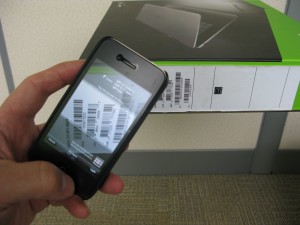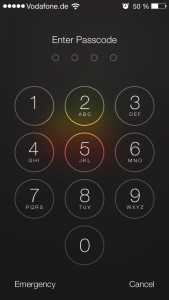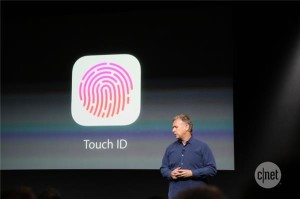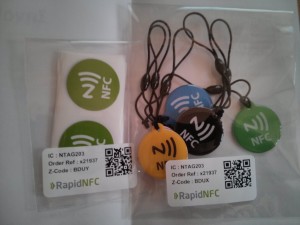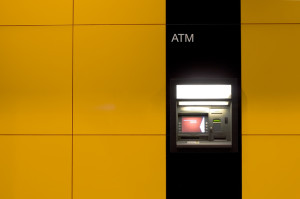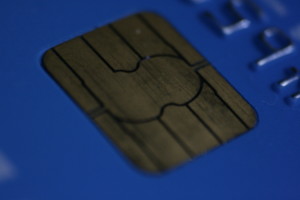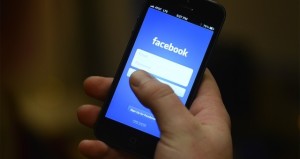Category: Mobile Payments
August 6th, 2014 by Elma Jane
Scanning your groceries yourself with the supermarket’s handheld scanner is something you may well have already done. Instead of waiting in line for a cashier to scan, tally and bag your groceries, you save time by scanning as you go and doing your own check-out. However, now in certain grocery stores you can go even further by using a bar code scanner app in your own smartphone to scan each grocery item you’re buying and to expand your shopping experience by receiving personalized offers, syncing with loyalty cards and tracking your budget while you shop. The first supermarket company in the United States to make this available to customers has been the Stop & Shop Supermarket Company LLC, with its Scan It! Mobile app service. Starting with three grocery stores and plans to roll out the capability to 45 more of its stores in Massachusetts, Rhode Island and Connecticut. The company could extend the service to the 400 or so grocery stores it operates in total, including the other states of New Hampshire, New York and New Jersey.
How Can You Use a Bar Code Scanner App?
By using a grocery shopping app like this in your smartphone, you can not only get directions on how to find the store in the first place, but once you’re there, you can also get relevant and specific offers according to where you are in the store and what you’ve already bought. With targeted coupons being sent to your smartphone for each shopping trip, you can save money as well; Stop & Shop estimates possible savings for customers on groceries of between $250 and $500 per year. The grocery shopping app also gives customers access to online accounts, including checking for gas points, A+ School Rewards and personalized savings, as well as to daily information about sales promotions for stores in general. To use the app to scan your groceries, you aim the camera of your phone at the bar code of a grocery item to see the price on your phone screen and to add it to an electronic shopping basket. When you’ve finished shopping, the bar code scanner app transmits the information via the supermarket’s Wi-Fi network to the point of sale, where you pay as you would normally. The same wireless network also allows the retailer to send you personalized information.
Happy customers and increased sales are not the only benefits for grocery stores making such bar code scanner apps available to customers with smartphones. Because the customer has in effect already financed the scanning device (the smartphone), grocery stores can envisage making corresponding savings by reducing the amount of in-store scanners they have to buy, as well as decreasing labor costs, which are typically between 12% and 15% of their total expenses.
Check Your Smartphone Compatibility
Using your mobile to do this means having a compatible smartphone. Currently for the Scan It! Mobile grocery shopping app you’ll need either an iPhone 3GS or 4G, or a compatible Android device. The list validated so far includes Android 2.2 running on Nexus One, Motorola Droid1, Samsung Galaxy, and HTC Thunderbolt 4G. The app can be downloaded for free at the Apple App Store or the Android Market.
Posted in Mobile Payments, Mobile Point of Sale, Smartphone Tagged with: Android device, Android Market, app, Apple App Store, bar code, bar code scanner app, coupons, electronic shopping, HTC Thunderbolt, in-store scanners, Iphone, loyalty cards, mobile app, Mobile app service, Mobile grocery shopping app, Motorola Droid1, Nexus One, online accounts, point of sale, Samsung Galaxy, scan, scanner, shopping app, smartphone, Stop & Shop, Wi-Fi, Wi-Fi network, wireless network
July 21st, 2014 by Elma Jane
PayPal has begun testing a new loyalty program called PayPal Select that seeks to promote use of the digital-payments network by offering more rewards for its most active members. The program launched by invitation only based on users’ history on PayPal and follows by about 18 months the cancellation PayPal’s previous loyalty program, PayPal Advantage. As PayPal looks to continue to build its volume of use on mobile devices off of eBay, driving repeat use and loyalty will be key. The challenges for the offer part will be the same as any other deal/offer program – namely the quality of the offers and inbox-offer fatigue. Like any big-screen concept that gets downscaled onto mobile, there is the challenge of how to hook people in the first couple of screens. CreditCall is not involved with PayPal Select. The payment platform is a division of San Jose, CA-based online auction giant eBay. It offers both a mobile app and an m-dot site for mobile payments.
Posted in Mobile Payments, Smartphone Tagged with: CreditCall, digital-payments network, ebay, loyalty program, m-dot site, mobile, mobile app, Mobile Devices, Mobile Payments, PayPal, PayPal Advantage, PayPal Select, rewards
July 14th, 2014 by Elma Jane
French financial services company LCL has introduced a service that securely issues payment card PIN codes to customers via SMS texting. The programme has been introduced initially for cardholders who forget their confidential code when out shopping or withdrawing cash. In a second phase, the bank intends to extend PIN issuance to coincide with the mail-out of newly-created cards.
LCL is using Gemalto’s Netsize platform, which offers direct connections to more than 160 mobile operators globally for message delivery. LCL recognizes the mobile channel as a new opportunity to support their continued drive to optimize card activation rates and be the top-of-wallet choice for payment. Enabling cardholders to get their PIN code on their mobile phone prompts them to start using their banking card as soon as they receive it.
Posted in Best Practices for Merchants, Mobile Payments, Smartphone Tagged with: bank, card, cardholders, codes, customers, mobile, mobile channel, payment, PIN, Rates, sms, wallet
June 3rd, 2014 by Elma Jane
Apple announced new Touch ID API better known among the masses as fingerprint ID, which will allow app developers to use fingerprint authentication for mobile payments and other applications.
This means that in addition to protecting the mobile device itself, the technology can now be used also to secure individual applications on the device against unauthorized use. Customers could potentially use prints from different fingers to control different apps. For instance, right thumbprint for access to the device, left index finger for access to the mobile bank app within the device.
The new feature for third party software developers provides a logical progression for the removal of password protection across a range of applications, including payments.
Financial services providers who offer the convenience of a mobile application for their customers can now also offer said customers an additional layer of security for the information that application holds.
Posted in Credit Card Security, Mobile Payments, Smartphone Tagged with: app, Apple, bank, device, financial services, Financial services providers, fingerprint authentication, fingerprint ID, mobile, mobile application, mobile bank app, Mobile Payments, payments, Security, software, software developers, Touch ID API
May 29th, 2014 by Elma Jane
A point-of-sale facial recognition system that uses NFC to help combat card fraud has been created during a recent company hack-a-thon, together with a group of engineers and designers from Logic PD. Hackathon was an opportunity for experts to explore the possibilities of useful solutions to today’s challenges, with the recent significant breaches in security at leading retailers, the need for this type of solution is particularly meaningful.
The solution, is a multi-modal security platform for card purchases, uses NFC authentication combined with camera imaging to protect users. When users make a mobile payment at the point of sale, the kiosk snaps a picture of the purchaser. This image can be incorporated via the cloud into the user’s digital transactional record, which was stored and distributed via SeeControl in this example, allowing users to identify who made each purchase, and easily identify those that are fraudulent even before banks and financial institutions.
Posted in Credit Card Security, Mobile Payments, Mobile Point of Sale, Point of Sale, Smartphone Tagged with: banks, breaches, card, card fraud, card purchases, cloud, digital, facial recognition system, financial institutions, mobile payment, nfc, NFC authentication, platform, point of sale, retailers, Security, security platform
May 21st, 2014 by Elma Jane
Mobile credit card processing is way cheaper than traditional point-of-sale (POS) systems. Accepting credit cards using mobile devices is stressful, not to mention a hassle to set up and customers would never dare compromise security by saving or swiping their credit cards on a mobile device. Some of the many myths surrounding mobile payments, which allow merchants to process credit card payments using smartphones and tablets. Merchants process payments using a physical credit card reader attached to a mobile device or by scanning previously stored credit card information from a mobile app, as is the case with mobile wallets. Benefits include convenience, a streamlined POS system and access to a breadth of business opportunities based on collected consumer data. Nevertheless, mobile payments as a whole remains a hotly debated topic among retailers, customers and industry experts alike.
Although mobile payment adoption has been slow, consumers are steadily shifting their preferences as an increasing number of merchants implement mobile payment technologies (made easier and more accessible by major mobile payment players such as Square and PayPal). To stay competitive, it’s more important than ever for small businesses to stay current and understand where mobile payment technology is heading.
If you’re considering adopting mobile payments or are simply curious about the technology, here are mobile payment myths that you may have heard, but are completely untrue.
All rates are conveniently the same. Thanks to the marketing of big players like Square and PayPal – which are not actually credit card processors, but aggregators rates can vary widely and significantly. For instance, consider that the average debit rate is 1.35 percent. Square’s is 2.75 percent and PayPal Here’s is 2.7 percent, so customers will have to pay an additional 1.41 percent and 1.35 percent, respectively, using these two services. Some cards also get charged well over 4 percent, such as foreign rewards cards. These companies profit & mobile customers lose. Always read the fine print.
Credit card information is stored on my mobile device after a transaction. Good mobile developers do not store any critical information on the device. That information should only be transferred through an encrypted, secure handshake between the application and the processor. No information should be stored or left hanging around following the transaction.
I already have a POS system – the hassle isn’t worth it. Mobile payments offer more flexibility to reach the customer than ever before. No longer are sales people tied to a cash register and counters to finish the sale. That flexibility can mean the difference between revenue and a lost sale. Mobile payments also have the latest technology to track sales, log revenue, fight chargebacks, and analyze performance quickly and easily.
If we build it, they will come. Many wallet providers believe that if you simply build a new mobile payment method into the phones, consumers will adopt it as their new wallet. This includes proponents of NFC technology, QR codes, Bluetooth and other technologies, but given very few merchants have the POS systems to accept these new types of technologies, consumers have not adopted. Currently, only 6.6 percent of merchants can accept NFC, and even less for QR codes or BLE technology, hence the extremely slow adoption rate. Simply put, the new solutions are NOT convenient, and do not replace consumers’ existing wallets, not even close.
It raises the risk of fraud. Fraud’s always a concern. However, since data isn’t stored on the device for Square and others, the data is stored on their servers, the risk is lessened. For example, there’s no need for you to fear one of your employees walking out with your tablet and downloading all of your customers’ info from the tablet. There’s also no heightened fraud risk for data loss if a tablet or mobile device is ever sold.
Mobile processing apps are error-free. Data corruption glitches do happen on wireless mobile devices. A merchant using mobile credit card processing apps needs to be more diligent to review their mobile processing transactions. Mobile technology is fantastic when it works.
Mobile wallets are about to happen. They aren’t about to happen, especially in developed markets like the U.S. It took 60 years to put in the banking infrastructure we have today and it will take years for mobile wallets to achieve critical mass here.
Setup is difficult and complicated. Setting up usually just involves downloading the vendor’s app and following the necessary steps to get the hardware and software up and running. The beauty of modern payment solutions is that like most mobile apps, they are built to be user-friendly and intuitive so merchants would have little trouble setting them up. Most mobile payment providers offer customer support as well, so you can always give them a call in the unlikely event that you have trouble setting up the system.
The biggest business opportunity in the mobile payments space is in developed markets. While most investments and activity in the Mobile Point of Sale space take place today in developed markets (North America and Western Europe), the largest opportunity is actually in emerging markets where most merchants are informal and by definition can’t get a merchant account to accept card payments. Credit and debit card penetration is higher in developed markets, but informal merchants account for the majority of payments volume in emerging markets and all those transactions are conducted in cash today.
Wireless devices are unreliable. Reliability is very often brought up as I think many businesses are wary of fully wireless setups. I think this is partly justified, but very easily mitigated, for example with a separate Wi-Fi network solely for point of sale and payments. With the right device, network equipment, software and card processor, reliability shouldn’t be an issue.
Posted in Best Practices for Merchants, Mobile Payments, Mobile Point of Sale, Smartphone Tagged with: (POS) systems, aggregators rates, apps, BLE technology, bluetooth, card, card processor, card reader, cash, cash register, chargebacks, consumer data, credit, credit card payments, credit card processing, credit card processors, credit card reader, credit-card, customer support, data, data loss, debit card, debit rate, device, fraud, fraud risk, hardware, industry experts, merchant account, Merchant's, mobile, mobile app, mobile credit card processing, Mobile Devices, Mobile Payments, mobile point of sale, Mobile processing apps, mobile processing transactions, mobile technology, mobile wallets, network, network equipment, nfc, nfc technology, payment solutions, payment technology, PayPal, phones, point of sale, qr codes, retailers, rewards cards, Security, Smartphones, software, Square, tablet, tablets, vendor's app, wallet providers, Wi-Fi network, wireless mobile, wireless mobile devices
May 19th, 2014 by Elma Jane
T-Mobile customers who use their carrier’s Mobile Money app and prepaid card will now have surcharge-free access to more than 43,000 Allpoint-branded ATMs across the United States, through an agreement with the Allpoint Network. The Mobile Money program unites a money management app, a T-Mobile Visa prepaid card and the Allpoint surcharge-free ATM network on a single mobile device to provide customers many of the features of a checking account. With Mobile Money, registered T-Mobile wireless customers pay nothing when they use their T-Mobile Visa Prepaid Card to withdraw cash at an in-network Allpoint ATM.
When T-Mobile began developing the Mobile Money program, a key goal was to use the smartphone to help consumers both manage their money and keep more of it in their pocket. The Allpoint Network helps accomplish that mission with 43,000 surcharge-free ATMs found in many of America’s most popular retailers, made even more convenient by a free, easy-to-use Allpoint ATM locator within the Mobile Money app.
Easy access to cash, preferably without the surcharge imposed by the ATM owner, is at the heart of the most successful general-purpose prepaid card programs. Having access to Allpoint, the T-Mobile Visa Prepaid Card is a core component of Mobile Money by T-Mobile. Eligible cardholders looking for the nearest surcharge-free Allpoint ATM can use the Allpoint Network ATM locator, available online and as a free app for their smartphones.
Posted in Financial Services, Mobile Payments, Smartphone Tagged with: Allpoint ATM, Allpoint Network, Allpoint surcharge-free ATM network, Allpoint-branded ATMs, ATM locator, cardholders, checking account, free app, mobile device, mobile money, Mobile Money app, Mobile Money program, money management app, prepaid card, smartphone, surcharge-free, T-Mobile, T-Mobile Visa prepaid card, T-Mobile wireless
May 12th, 2014 by Elma Jane
New iPhone and VeriFone-made shell combination that can accept chip and PIN card payments. Apple’s revamp in its in-store mPOS system
In 2009, Apple introduced its EasyPay mPOS technology. It consists of an iPod Touch and a shell made by Infinite Peripherals that includes a card swiper and a barcode scanner.
As first reported by 9to5mac,the iPod is now being replaced by an iPhone while VeriFone is being brought in to provide a new shell which will cater for chip and PIN payments as the US finally gets ready for the switch to EMV. The shell also has a spot above the PIN pad that opens the way for NFC contactless payments, according to Forbes. Apple has long been expected to equip the iPhone with NFC but has so far ignored the technology.
Separately, mPOS giant Square has ditched its Wallet app, pulling it from the Google and Apple stores. The app has failed to take off since its launch in 2011, despite the support of Starbucks. It has been replaced by Square Orders, which lets users order and pay ahead at participating merchants and then pick up their goods when they are ready.
Posted in Best Practices for Merchants, Mobile Payments, Mobile Point of Sale, Point of Sale, Smartphone Tagged with: app, Apple stores, Apple's, barcode, barcode scanner, card, card swiper, chip, contactless payments, EasyPay, EMV, Forbes, google, in-store mPOS, Infinite Peripherals, Iphone, iPod, iPod Touch, Merchant's, MPOS, mPOS giant, mPOS system, mPOS technology, nfc, NFC contactless payments, PIN, PIN card, PIN card payments, PIN pad, Square, Starbucks, swiper, verifone, Wallet app
May 9th, 2014 by Elma Jane
Facebook is apparently ready to become a person-to-person (P2P) money transfer network. The clear decision to launch a money transfer service in the region can be seen as a test bed for Facebook’s larger ambitions of becoming a payments hub for its 1 billion user base. Facebook was only weeks away from gaining regulatory approval in Ireland for its remittance platform FT quoted unnamed sources. Facebook’s P2P platform will be geared to facilitating migrant remittances, with the goal of expanding its payment presence in emerging markets such as India. Facebook makes the bulk of its revenue from advertising, but 10 percent of its profits reportedly come from in-game payments for online and mobile games, such as Zynga’s popular FarmVille.
From WhatsApp to what’s next
Facebook’s February 2014 acquisition of mobile messaging service WhatsApp for $19 billion clarified the social network’s strategy. The WhatsApp acquisition and the expected P2P network launch as part of the first phase of Facebook’s deeper immersion into payments.
Tech giants face up to payments
When comparing the payment strategies of tech giants Google Inc., Apple Inc. and Facebook, the latter two competitors as having bigger potential upsides than Google. Facebook and Apple (via iTunes) already have established financial relationships with millions of users who have attached funding mechanisms – debit and credit cards – to their social media accounts. As primarily a search engine, Google is playing catch up to persuade its users to set up Google Wallet accounts.
In May 2013, Google launched its own P2P network by integrating Google Wallet with Gmail accounts, so that wallet users can facilitate money transfers via email. More recently, reports have surfaced indicating Google plans to extend Google Wallet to its wearable technology solution Google Glass. But the success of such ventures rests on users’ confidence with Google as a financial service provider.
Facebook as having a brighter financial services future than Apple. Apple’s reach is limited to consumers who have iPhones and iPads, whereas Facebook is not tied to any branded mobile devices, it is a very ubiquitous offering. It could apply to anybody with any type of phone or tablet.
Eventually, tech companies like Facebook will need to partner with payment businesses in order to expand into the merchant-centric brick-and-mortar world. The mobile POS solution provider, a business unit of global POS terminal manufacturer Ingenico SA, would be an ideal partner for Facebook. If they extend what they do from P2P payments to more of a wallet purchasing capability for their users, then the next step could very easily be an extension of that into servicing the merchant side.
Posted in Financial Services, Mobile Payments, Smartphone Tagged with: Apple Inc.Facebook, consumers, credit cards, debit, device, financial service, financial service provider, Gmail accounts, Google Glass, Google Inc., Google Wallet accounts, ingenico, iPads, iPhones, iTunes, merchant-centric brick-and-mortar, migrant remittances, mobile, Mobile Devices, mobile games, mobile messaging service, mobile pos, mobile POS solution, mobile POS solution provider, money transfer, money transfer network, money transfer service, network, online, p2p, P2P network, P2P payments, P2P platform, payment businesses, payments, payments hub, phone, POS terminal, remittance, remittance platform, search engine, service provider, social media, social media accounts, social networks, tablet, wearable technology
May 6th, 2014 by Elma Jane
Mobile commerce platform provider ROAM, an Ingenico company has expanded its mPOS solutions to include chip-and-PIN acceptance with the RP750x mobile card reader. The reader allows mPOS players to get to market quickly with their own custom-branded solution, providing merchants with a powerful set of features that include device and fraud management, remote application configuration, and an mPOS application that can be localized for any language and currency in any country. Features include: Backlit display, EMV PIN pad, magnetic stripe reader, NFC reader and smart card reader. Configurable through the cloud, enabling direct shipment from factory to any country. Connects with smartphones, tablets and feature phones via Bluetooth or audio jack. Customizable for branding and form factor. Just Slightly larger than a credit card, a compact form factor. PCI PTS 3.1 with SRED, EMV Level 1 and 2, Visa-ready (Compliant with the latest industry standards).
Posted in Best Practices for Merchants, Credit Card Reader Terminal, e-commerce & m-commerce, EMV EuroPay MasterCard Visa, Financial Services, Mobile Payments, Mobile Point of Sale, Near Field Communication, Payment Card Industry PCI Security, Point of Sale, Smartphone, smartSD Cards, Visa MasterCard American Express Tagged with: bluetooth, Chip and PIN, cloud, compliant, credit-card, currency, EMV, fraud, magnetic stripe reader, Merchant's, mobile card reader, Mobile commerce platform, mPOS solutions, nfc, PIN pad, smart card reader, Smartphones, tablets, visa
